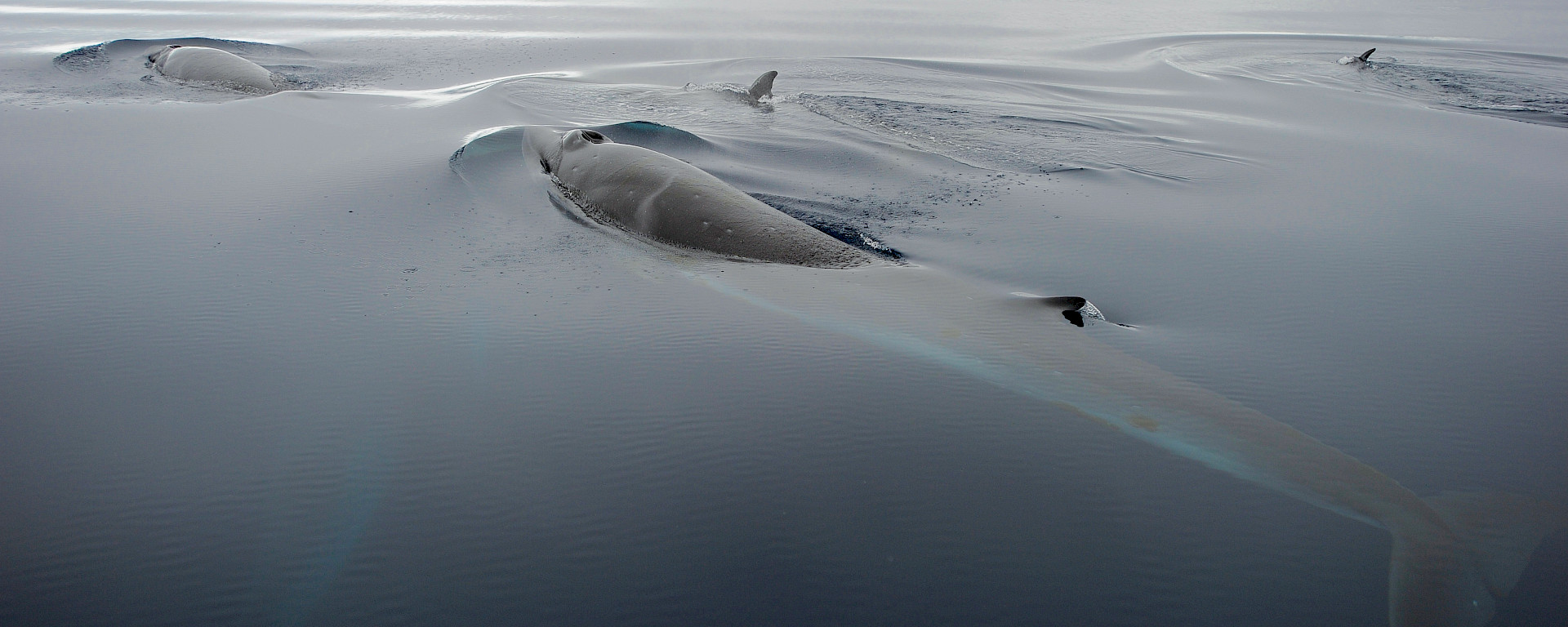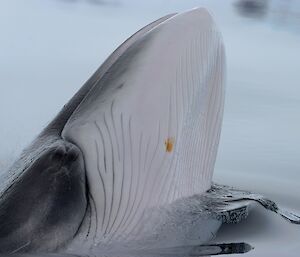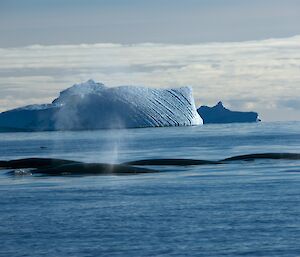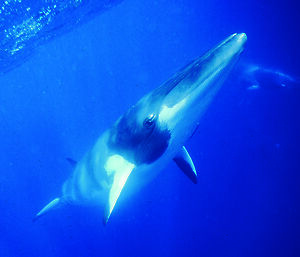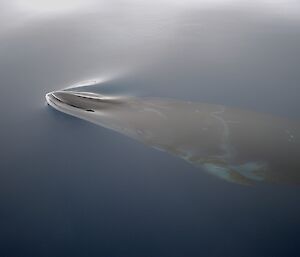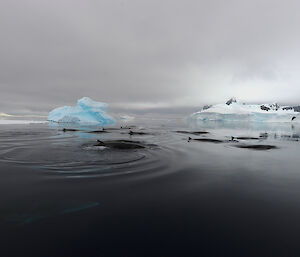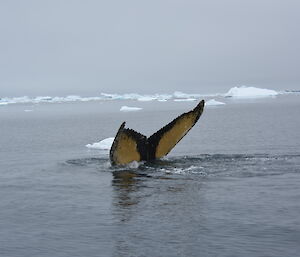Scientific name: Balaenoptera acutorostrata
Physical description and related species
Minke whales are one of the smallest species of baleen whales and grow to nearly 9 metres long and about 10 tonnes in weight.
There are two ‘forms’ of minke whales, sub species or possibly even separate species. They are distinguished by size and colour pattern differences.
Distribution and abundance
Distribution: Minkes are the only baleen whale species which is still common in Antarctic waters and apparently the most ice adapted of the Antarctic baleen whales. They have been seen hundreds of kilometres into heavy pack ice in the middle of winter, and some of them obviously spend the winter there.
In summer, their favoured habitat seems to be open pack ice, that is, pack ice where there is quite a lot of open water among ice floes.
In very heavy ice, minkes breathe by sticking their pointed heads vertically out through narrow cracks in the ice. How they can find their way from one open crack to another before they run out of breath is a mystery.
Minkes are regarded as very inquisitive animals. They will often swim repeatedly around a small vessel, and go out of their way to approach a moving ship, before veering away at high speed.
Threats
They are now the target of the whaling industry, which in its present form, kills minkes for ‘scientific research', but is attempting to recommence commercial whaling. The meat from this research is sold in commercial markets.
Conservation status: least concern
Breeding
Like other baleen whales, many minke whales migrate to somewhere in tropical waters to breed in winter.
Diet and feeding
Like blue whales, they feed almost exclusively on Antarctic krill while in Antarctic waters. They are usually feed in groups, but may form huge groups of many hundreds if there is enough food present.

